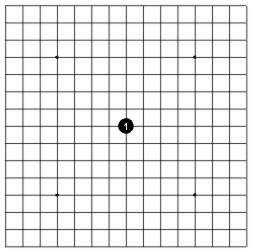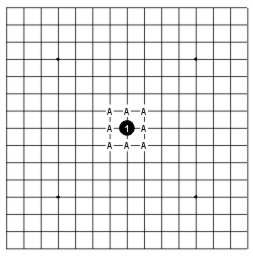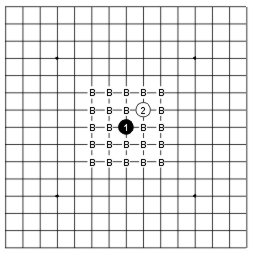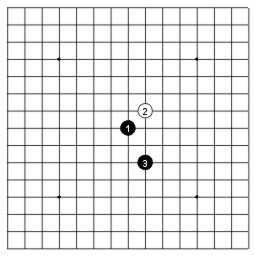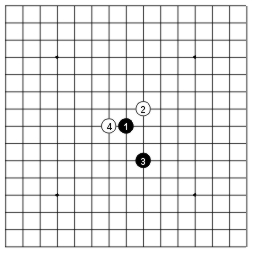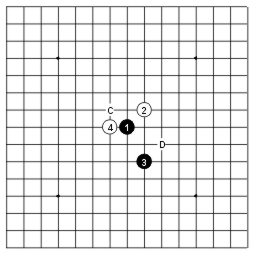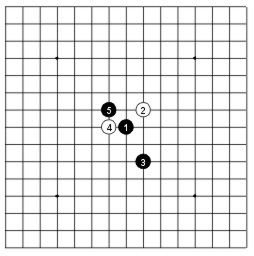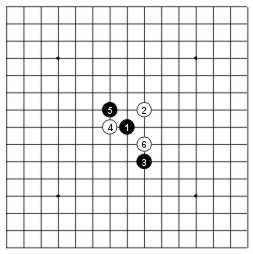|
The Procedure of Starting the Game Having studied both basic and advanced tutorials, you are ready for some serious renju games online or even in real tournaments. But you need to know one more thing about renju rules before that - the opening procedure. With the years of serious games and analyses by strong masters, it became evident that the forbidden moves alone are not sufficient enough to provide the balance in the game, black was still having the advantage. In order to give the best balance, there were developed some opening procedures that both players need to follow. Below is the list of those procedures.
The opening prcedure ends with the 6th move. Then the normal game goes on until somebody wins, or until the game ends with draw. Below you can see the detailed explanation of those 5 steps of opening process. 1. SETTING THE OPENING PATTERN
Then the first player also puts the second stone which is white and it is placed inside the 3x3 central square, to one of the points marked with A on the diagram below.
And then, the first player puts the third stone, too, which is black and it is placed inside the 5x5 central square, to one of the points marked with B on the diagram below.
Having put the three stones, the situation might look something like on the example below.
2. CHOOSING THE COLOR 3. PLAYING THE FOURTH MOVE
4. OFFERING THE TWO 5TH MOVES
5. CHOOSING THE 5TH MOVE AND PLAYING THE 6TH MOVE
And then the white player also puts the 6th move on the board - the white stone. He can play it anywhere he likes. Look at the example below.
After all that the game goes on normally, the players take turns, playing stones one by one. However, you should always keep in mind about the rules of forbidden 3x3, 4x4 and overline. Sometimes the traps may wait for you just when you have completed the opening procedure. In order to prevent the "opening disasters", it might be useful to learn some opening theories. There are lots of information sources available about renju opening theories. In order to make the opening theory more organized, the developers of renju game have divided all the theory according to the "renju openings". The opening is determined with the first three stones. There are totally 26 different openings in renju. Each opening has its name, too. Every serious renju player studies all the 26 openings. If you want to become a serious player, too, then you might want to know something about those renju openings too. In that case, welcome to study the 26 Renju Openings. |
